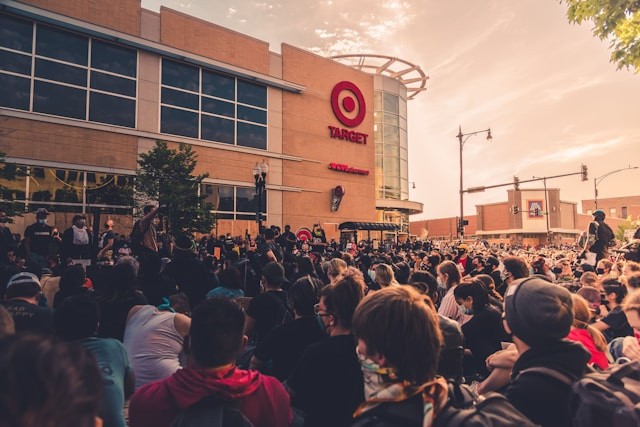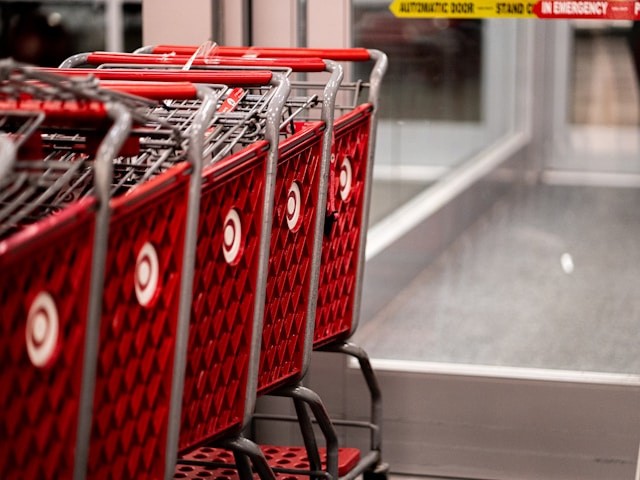
Amid complaints about lengthy checkout lines, shoppers turn their backs on Target.
They're frustrated with the store's self-checkout policies, claiming they're stuck waiting longer. This dissatisfaction is leading many customers to opt for Amazon and Walmart instead.
Backlash Grows as Target's Checkout Changes Disappoint
Target's decision to implement a ten-items-or-less rule at self-checkouts last October has triggered ongoing customer criticism. Although the rule aimed to "reduce wait times and better understand guest preferences," shoppers continue to voice dissatisfaction on social media.
Some Target stores have responded by reducing the number of open self-checkout kiosks or eliminating them. One customer expressed concern, suggesting that a store scaling back on self-checkout could face dire consequences.
Target replied to the customer, expressing regret and requesting personal information to address the issue internally.
Despite Target's efforts, long lines at manned checkout lanes persist, frustrating customers who endure lengthy waits. Another customer highlighted the closure of all self-checkout lanes at a Brooklyn Target, emphasizing the convenience advantage enjoyed by competitors like Amazon and Walmart.
The discontent extends beyond social media, with customers sharing videos depicting extensive lines and expressing disappointment at Target's checkout policies. Some shoppers advocate for a model similar to Sam's Club, where most lines are self-checkout, except for a few manned ones.
Reports reveal that several Target locations, including one in Emeryville, California, have removed self-checkout kiosks altogether. This decision follows a significant increase in theft, which soared by 120% in the first half of 2023 compared to the previous year, as reported by The U.S. Sun.
Also Read: Costco Controversy: Shopper Slams Return of Half-Eaten Pickles as 'Policy Abuse'
Target's Checkout Policy Faces Criticism

Target's decision to roll out a ten-item limit at self-checkouts across all 2,000 stores, following a trial in 200 locations since October, has drawn ire from shoppers. Many complained about the lack of additional manned lanes for those with more than ten items.
The retail giant stated, "Store leaders can open more lanes staffed by team members and set self-checkout hours for their store. While the hours of operation may vary based on store needs, Express Self-Checkout will be available during the busiest shopping times."
In response to rising crime rates, some Target stores are implementing stricter measures, such as age-restricted entry and increased security. In December, one store enforced an age restriction, mandating customers under 18 to be accompanied by an adult.
Meanwhile, other retailers are also reevaluating their self-checkout systems, many opting to remove them entirely. Walmart, for instance, recently announced plans to eliminate self-checkouts from two additional stores, citing a rise in theft incidents as the primary reason behind the decision.
Last month, Dollar General made a significant move to combat shoplifting by removing self-checkout stands from 300 stores where theft and scanning errors were most prevalent.
In its 9,000 remaining locations, the retailer announced plans to convert some self-checkout registers into traditional cashier lanes. Additionally, self-checkout purchases will be limited to five items or fewer in 4,500 stores.
This decision reflects Dollar General's commitment to tackling theft and ensuring accurate scanning at checkout.
Similar shifts are underway in other retail chains. Walmart, for example, has experimented with various self-checkout strategies, including exclusive lanes for Walmart+ members and selective self-checkout closure during specific hours.
As retailers adapt to evolving challenges, changes to self-checkout systems play a crucial role in enhancing security and customer satisfaction.
Related Article: Family Dollar Announces Permanent Closure in Four Days, 75% Off Sale to Follow















